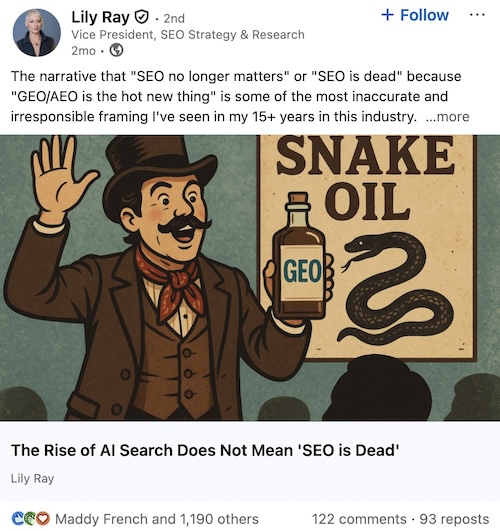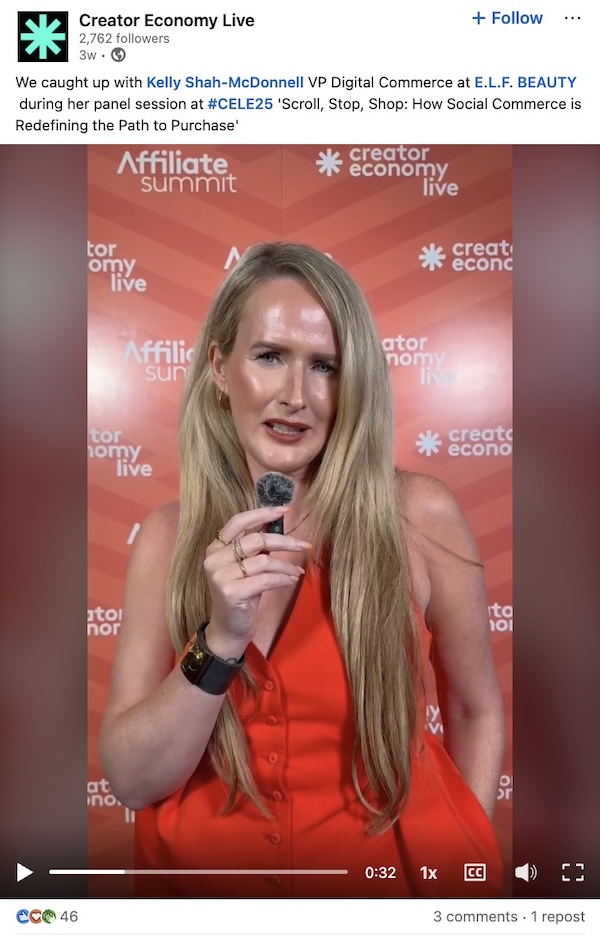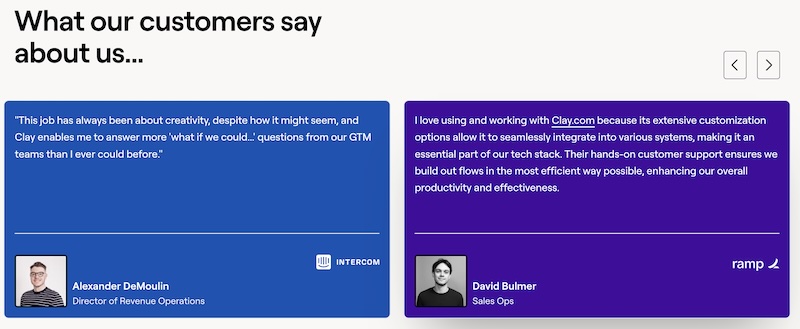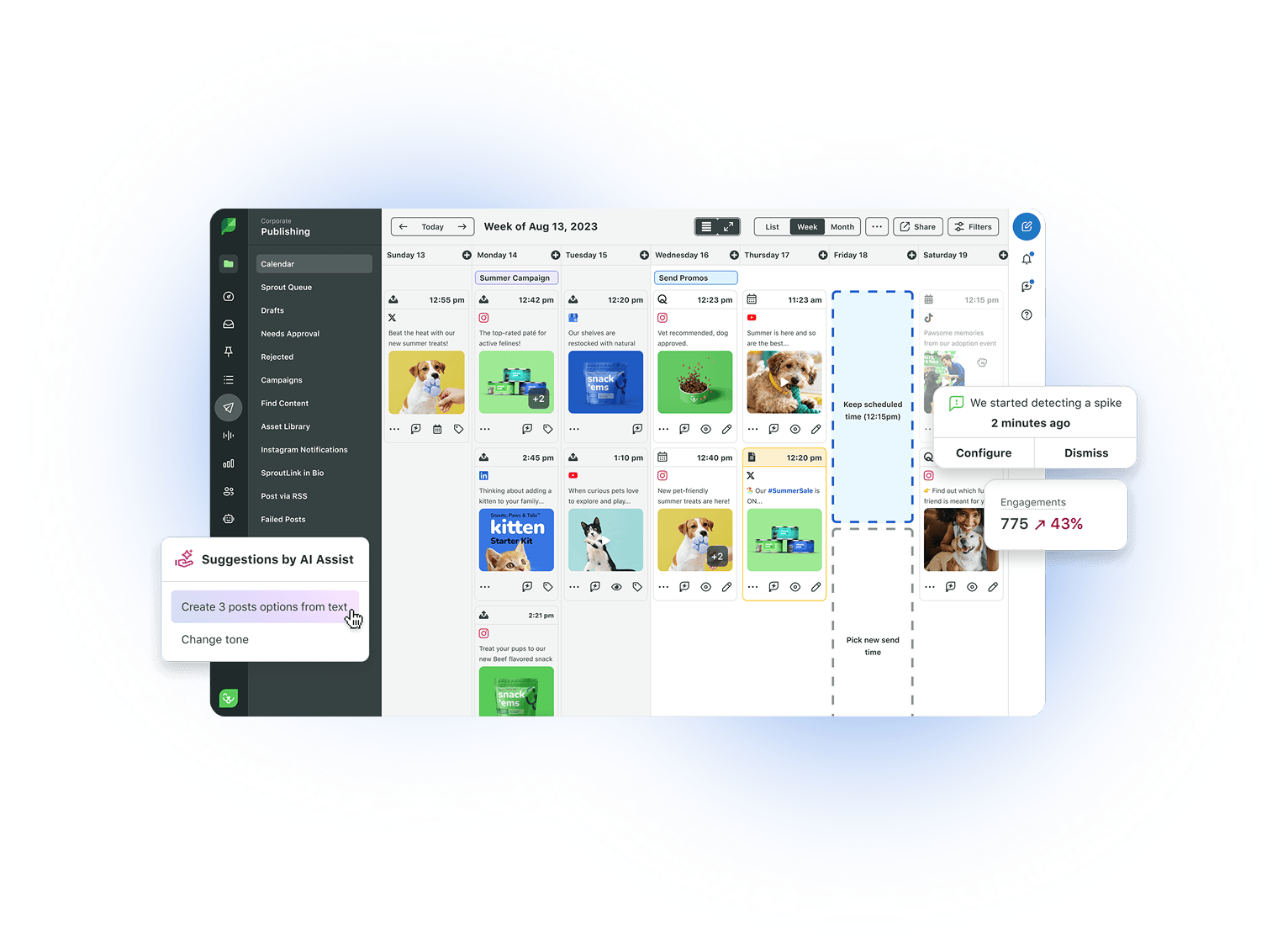What are KOLs in marketing? How to find true experts for your brand

Table of Contents
Cutting through the noise is one of the biggest challenges for marketers today.
Especially in the era where consumers are overwhelmed by content oversaturation.
And for brands in this environment, establishing trust goes hand in hand with grabbing attention.
That’s why the voices of key opinion leaders (KOLs) are so powerful for your social strategy. KOLs are trusted authorities in their fields, possessing professional experience, credibility and a respected reputation.
The influence of KOLs isn’t about popularity or follower count. Instead, it’s about their expertise and industry standing.
This post explains what KOLs are in marketing, how they differ from influencers and how to leverage KOLs in your marketing efforts.
What are key opinion leaders (KOLs)?
A key opinion leader (KOL) is an individual widely recognized as an expert within a specific field or industry. They’ve earned trust through their professional knowledge and accomplishments, making them trusted sources in their respective industries for valuable insights and expert recommendations.
Compared to influencers who typically create an audience via lifestyle content or product recommendations, KOLs build influence through their first-hand experience, specialized knowledge and contributions to their field.
Translation? Being a KOL is more about what you know, not who or how many people follow you.
While many KOLs have large follower counts, others have minimal social footprints. Key opinion leaders range from CEOs and journalists to podcasters or researchers.
Key opinion leaders exist across industries. For example, some KOLs in the world of SEO include Google’s John Mueller, Sparktoro/Moz founder Rand Fishkin and long-time strategist Lily Ray. When there’s a new algorithm update or SEO trend, these are the voices you look to first.

In business, KOLs lend credibility to a brand or message. Association with thought leaders can build much-needed credibility for companies or products, not to mention result in exposure.
KOL vs. influencer: Understanding key differences
It’s easy to confuse KOLs and influencers, but they are absolutely not the same.
This is especially true when it comes to marketing. The approach and principles that drive KOLs and influencers (specifically content creators) to promote products are apples and oranges.
Let’s make the distinction between KOLs vs influencers crystal clear:
| Category | KOL | Influencer |
|---|---|---|
| Basis of influence | Professional experience and accomplishments, credentials, thought leadership, industry experience | Social media presence and activity, relatability, lifestyle |
| Audience connection | Trusted by peers, professionals and industry-specific communities for their insights | Trusted by everyday consumers for their personalities and/or product recommendations |
| Content focus | Educational, research-based, professional insights, interviews, editorials, longer-form content (written or video) | Entertainment or “edutainment,” tutorials and how-tos, product-focused (typically video or image-based) |
| Perceived credibility | Viewed as authoritative experts | Viewed as relatable personalities |
| Basis of recommendations | Organic, based on firsthand experience or research and insights from fellow KOLs, typically not “tied” to a specific brand or product | Paid (but sometimes organic), based on compensation or partnerships with brands, endorsements must be disclosed |
Both key opinion leaders and influencers are incredibly valuable for brands, yet they cover different goals and require separate strategies. Influencer partnerships are most impactful for B2C audiences, whereas KOLs’ credibility is associated with those in the B2B space. While brand relationships with influencers are transactional, brand shout-outs from KOLs often happen through strategic relationship-building.
Keep in mind also that someone initially considered an influencer can evolve into a KOL or thought leader over time. Someone like Marques Brownlee is a great example. While Brownlee began his career as a teenager doing tech reviews on YouTube, he’s managed to outgrow the “influencer” label into a credible KOL given his experience and 20M+ YouTube subscribers.
Why should you work with KOLs as part of your marketing strategy?
So, why should key opinion leaders be part of your marketing strategies? Consider the unique benefits below.
Builds unmatched trust and credibility
Think of a recommendation from a KOL as a stamp of approval. This signals your brand or product’s legitimacy in a way that can’t be bought like a traditional ad.
Mentions in interviews, podcasts or social posts from KOLs are like gold, especially for B2B brands. For example, SaaS solutions that are organically mentioned or featured on Dave Gerhardt’s Exit Five Podcast represent super powerful endorsements.

In short, getting featured on an expert’s “list” is one of the best ways to build brand trust.
Reaches niches and high-value audiences
KOLs often operate in specialized industries and tight-knit communities.
These thought leaders are decision-makers and subject matter experts, often the sort of people who speak at industry conferences.
For example, a brand that works with the influencer or affiliate space would massively benefit from a collab with someone doing a panel at an event like Creator Economy Live.

These sorts of collabs can open up conversations with specific and highly valuable audiences.
Drives high-quality engagement and conversion
Because followers trust their opinions so much, KOL recommendations go hand in hand with more informed purchasing decisions.
Testimonials from KOLs can instantly move someone from awareness to action, which is why they’re often front-and-center on SaaS company websites like Clay’s.

These recommendations are a crucial part of the modern buyer’s journey, especially in an era where consumers feel like they have to dig for authentic endorsements that aren’t being paid for.
How to build a KOL marketing strategy
Earning the endorsements of KOLs may seem like an uphill battle.
That said, it doesn’t happen totally by accident.
Creating a successful KOL program requires more than freebies and sponsorships, though. Doing so involves a combination of strategy, research and relationship-building via the steps below.
Step 1: Identify the right KOLs for your brand
First things first: you need to know who the thought leaders in your space you want to reach and why you want to reach them in the first place.
Who you’ll seek out depends on your goals as well. Are you seeking a podcast mention? A write-up or testimonial? This will inspire the people you look for and where you find your KOLs.
Speaking of, here are some ideas as you figure out how to find KOLs for your brand:
- Look at bylines for major industry publications, including blogs and print media
- Explore interview series and podcasts for your industry on Spotify, YouTube and LinkedIn
- Talk to your company’s network (specifically the C-suite) to leverage existing relationships with KOLs
- Review conference speaker lineups for industry events big and small
- Tap into social media listening tools to spot top experts mentioned on platforms like LinkedIn, X and other niche communities online
These sources will likely overlap, but can serve as your shortlist of KOLs to target. Ideally, you should focus on folks you have personal connections with first.
Step 2: Vet and engage potential partners
Remember: what matters is finding relevant KOLs based on your industry and audience.
Seemingly niche thought leaders are totally fair game, granted they’re speaking to your customers and other players in your industry.
Audience size is not the measuring stick for the potential impact of a KOL. Beyond follower count, make sure you do your homework before reaching out or building a relationship. That means:
- Reviewing their credentials and background
- Assess the quality and tone of their content
- Confirm their audience’s engagement and legitimacy
- Verify that their values align with your brand’s values
When it comes time to actually reach out, do not try to rush it. Blasting AI-generated LinkedIn DMs or generic pitches is a surefire way to get ignored. This is all the more reason to really put your target KOLs under the microscope.
Personalized and long-term relationships are the name of the game here. Acknowledging their expertise and referencing their work is the bare minimum when it comes to proposing a partnership. You need to come to the table with clear value and what you can do for them. That might mean access to exclusive research or another high-value opportunity that goes beyond typical co-marketing.
Step 3: Collaborate and nurture the relationship
Working with KOLs should feel like a collaboration rather than a pure transaction. Don’t expect to control or call all the shots like you would with a traditional creator endorsement or sponsorship.
Instead, invite their input and give them ample creative freedom. Remember that a KOL’s authenticity is their superpower and you don’t want to needlessly get in the way of it.
Long-term relationships with KOLs can result in long-term, ongoing brand advocacy. For example, getting a thought leader legitimately interested in your product or company’s happenings might translate into repeat shout-outs, features on panels and super thoughtful testimonials.
Break through the noise with KOLs
KOLs represent trusted voices and arguably your most powerful marketing partners.
And for brands, relationships built with KOLs can unlock new opportunities and kickstart long-term growth.
Getting there means approaching KOLs with authenticity, shared values and a true understanding of their expertise. The sooner your brand gets on the radar of KOLs, the better.
If you’re eager to uncover your brand’s real experts, test-drive a demo of Sprout Social’s listening capabilities to find those voices so much faster.
FAQs about KOLs
What does KOL mean?
A KOL is a key opinion leader. This is a trustworthy expert in an industry with influence that’s based on their professional perspective and credibility.
What is an example of a KOL?
Examples of KOLs include Google’s John Mueller, who is extremely visible in the world of SEO and has a unique professional perspective on search optimization given his time with Google.
What is the main difference between a KOL and an influencer?
KOLs influence consumers through their expertise, whereas influencers and content creators build influence through their relatability and personalities. Also, KOL recommendations are more organic than a transactional endorsement from a creator.
Can a KOL also be an influencer?
Yes, professionals and industry experts can potentially grow large social followings and likewise endorse products or brands via paid partnerships.
How do you measure the success of a KOL campaign?
Audience sentiment scores and conversion metrics can help measure how KOL campaigns perform, where social engagement can help assess KOLs themselves prior to outreach.
Are KOLs only for B2B marketing?
No, KOLs can work across both B2B and B2C (especially retail-centric industries).


Share